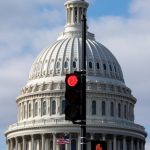For ten years, the Seoul Episcopal Conference has promoted at least two listening sessions each year in places important to the life of the Church and society. On the plains surrounding the largest dam in the world built 20 years ago, the bishops had the opportunity to experience first-hand the serious consequences on the environment and the lives of local communities, which last year also highlighted the failed management of the Scout Jamboree.
Seoul () – Groups of bishops visit significant places on important issues inside and outside the Church. From the perspective of the “Church on the way out” that Pope Francis never tires of pointing out, an interesting path is that of the “field experiences” promoted by the Korean Episcopal Conference, which precisely this year celebrated its tenth anniversary. Emerging from a decision made in the local assembly of bishops, since 2014 each year at least two significant places have been identified to which two delegations of bishops are sent for a day of listening to local communities.
The first of this year’s two “field experiences” took place on April 30 in the Haechang and Sura marshes, at the Saemangeum Dam, the gigantic 33-kilometer dam – the longest in the world – on the southwest coast. of the Korean Peninsula – which joins two promontories that separate the West Sea (what for the Chinese is the Yellow Sea) from the ancient estuary of the Saemangeum River.
Participating in the visit, organized by the Ecology and Environment Committee of the Episcopal Conference, were Bishop Cho Hwan-Kil (archbishop of Daegu), Bishop Kwon Hyeok-ju (bishop of Andong), Bishop Cho Kyu-man ( Bishop of Wonju), Bishop Kim Son-tae (Bishop of Jeonju), Bishop Kim Ju-young (Bishop of Chuncheon), Cho Kyu-man (Bishop of Wonju), Bishop Kim Son-tae (Bishop of Jeonju) , Bishop Kim Ju-young (bishop of Chuncheon) and Bishop Lee Sung-hyo (auxiliary bishop of the diocese of Suwon). The bishops met in the morning to observe the Haechang Plains, then heard an explanation of the damage created by the Saemangeum Dam at the Dengyong Catholic Church, and finally visited the Sura Plains in the afternoon.
On April 21, 2006, after the construction of the large dam, Lake Saemangeum quickly rotted and the floodgates had to be opened; For this reason, since 2020, seawater has been distributed twice a day, keeping it 1.5 meters below sea level. This method does not solve the problem of rotten water in the lake and, when it flows into the sea, it also contributes pollution outside the dam. The Haechang plain was also the scene last summer of the Jamboree – the World Scout Meeting -, which unintentionally became a symbol of the poor environmental conditions of the area,
also proving unsuitable for their tents. Here, the bishops met with Father Moon Kyu-hyun, priest of the Jeonju diocese, who traveled 65 days to Seoul on a small boat with monk Su-kyung and pastors Kim Kyung-e Lee Hee-woon to raise awareness over the Saemangeum Plains in spring 2023.
The Sura tidal flat is located near the town of Namsura. Its name means “embroidered silk” and was named so to describe the rich biodiversity created by the tides: some endangered bird species still survive here. Now, however, this area is also threatened by the construction project of the new Saemangeum airport, which the Government wants to open in 2029. A project that is opposed by the communities in the area, since there is already an airfield in nearby Gunsan , and also in an area exposed to the risk of flooding due to the rise in sea level and the collision of planes with flocks of birds in the area.
“Sea water must be able to come and go, and the current situation seems serious,” said Archbishop Cho Hwan-gil, commenting on what he saw during the day: “I saw a banner that said ‘Water is life’ and I realized realize that we must work to make this happen. “I had heard a lot about this problem, but only coming here did I realize how serious the situation is,” added Monsignor Kim Sun-tae. “It is a project that started from the beginning with little clarity. As believers, we must pray and understand wisely how to overcome this situation and resolve it well.”
The Korean bishops’ second “field experience” took place on May 9 at the Incheon Youth Self-Reliance Support Center. In attendance were the president of the Episcopal Conference, Monsignor Lee Yong-hoon, Monsignor Kim Jong-gang, chairman of the Youth Ministry Committee, Monsignor Jung Shin-chul (Bishop of Incheon), Monsignor Kim Ju-young (Bishop of Chuncheon), Monsignor Moon Chang-woo (bishop of Jeju) and Monsignor Seo Sang-beom (military ordinary).
Managed by the Catholic Foundation for Children and Youth on behalf of Incheon Metropolitan City, the Youth Self-Reliance Support Center provides a harmonious living environment and practical self-reliance training programs to local youth, especially who leave penitentiary institutions. The goal is reintegration into society by supporting psychological, social and economic independence.
“ECCLESIA IN ASIA” IS THE ASIANEWS NEWSLETTER DEDICATED TO THE CHURCH IN ASIA.
WOULD YOU LIKE TO RECEIVE IT EVERY SUNDAY IN YOUR EMAIL? SUBSCRIBE TO THE NEWSLETTER IN THIS LINK






![[Img #74675]](https://thelatestnews.world/wp-content/uploads/2024/12/They-discover-a-new-class-of-X-ray-sources-in-the-150x150.jpg)






Add Comment